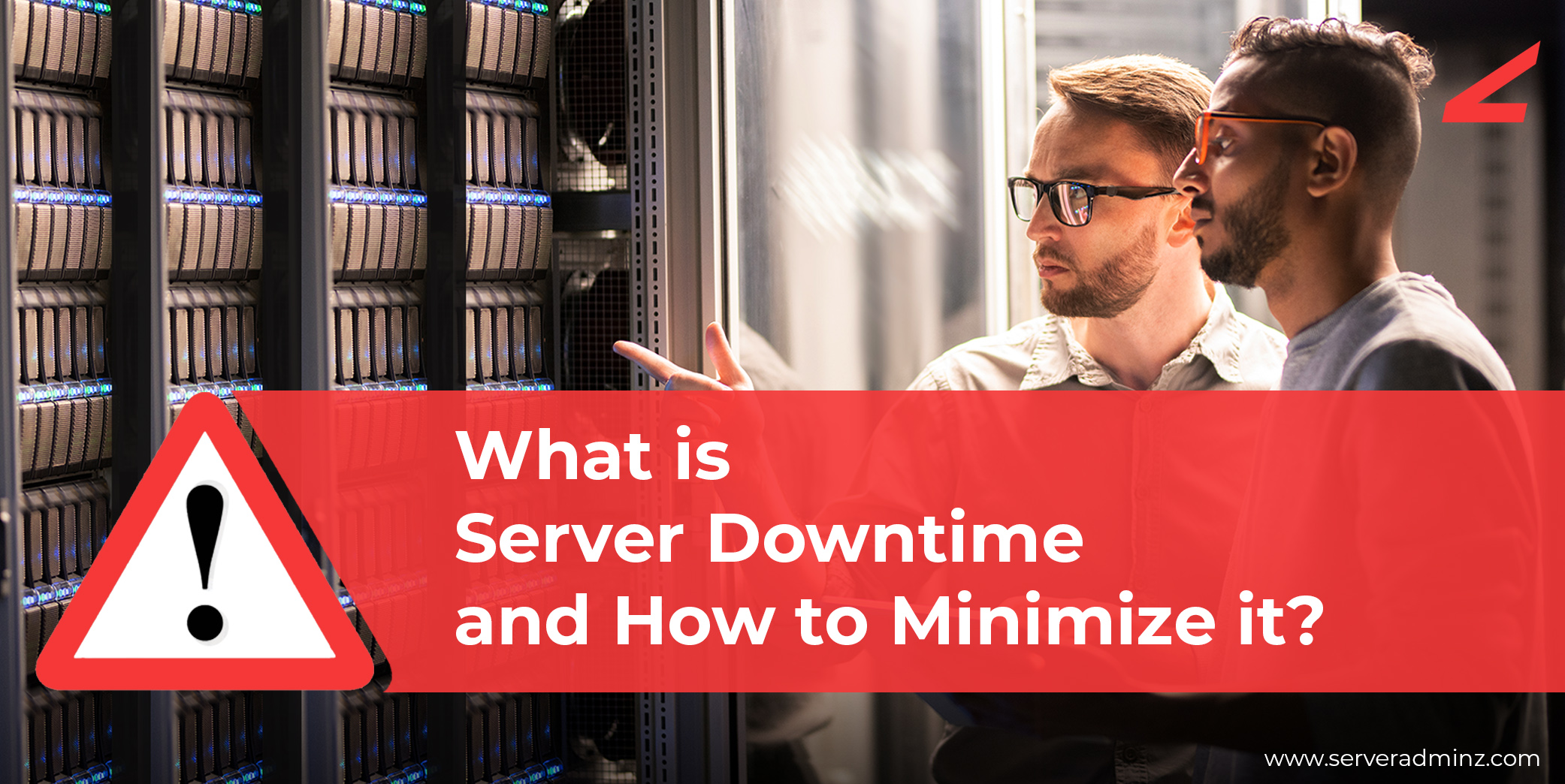A server is a computer software or hardware that provide data, resources and programs to other systems. Servers acts as a one central system where your business store critical information, which can then be accessed, shared or managed. Since servers are used to deliver services required constantly, it will remain ON always. So, servers being a crucial part of the business operation, imagine what would happen if a server goes down even for a very few seconds. The immediate impact of unplanned server downtime for a business is reduced productivity and revenue. Fortunately, we can implement certain set of best practices to prevent such unplanned server downtime.
Before moving onto discussing about server downtime, let’s have a quick look at what is server load and why it is necessary to keep a watch on server load?
What is a server Load?
According to DNSstuff, a server load can be defined as the number of processes waiting in the queue to access a computer processor and is usually calculated over a specific period of time. The more the server load is, the more will be the strain on the server. So, for satisfactory server performance, it is always advised to keep the server load level within the acceptable limit.
There are lots of factors that affect server load and the most common cause being a distributed denial-of-service (DDoS) attack. DDoS attack floods the server with lots of requests, making the server to overload and crash. It can cause significant damage to your business. Hence, if you notice that your server’s load is peaking and is causing concerns, consider contacting a server management company to get the issue identified and resolved.
How to Minimize Server Downtime?
Now, let’s move onto discussing about the best practices to minimize server downtime. However, it should be noted that, completely preventing server downtime is not at all possible.
-
Human Errors
Several studies have shown that, human errors are the most common cause of server downtime. A study conducted by computerweekly.com shows that around 75% of all the downtime is a result of some sort of human error.
Hence, data centers and businesses need to ensure that only authorized personals have access to make changes on the server. Having a proper documentation of the routine tasks that needs to be executed will also help in reducing the likelihood of errors.
-
Stay Protected from Cyber Attacks
Cyber-attacks are another major cause of server downtime. Servers are vulnerable to cyber-attacks, especially a DDoS attack. Falling victim to DDoS attack can be catastrophic for businesses. In DDoS attacks, servers are flooded with lots of requests, making the server to go overload and crash.
Adding redundancy to your infrastructure by spreading your servers across different data centers with a good balancing system, is one of the easiest ways to stay protected from a DDoS attack. However, deploying an anti-DDoS hardware and software module seems to be most effective. Anti-DDoS software runs on top of the existing hardware and help filter out malicious traffic. It is one of the most cost-effective and simpler method. Anti-DDoS hosting, anti-DDoS firewall are some of the other methods to prevent a DDoS attack.
To know more about DDoS attack, visit – Distributed Denial of Service (DDoS attack)
-
Have an Uninterrupted Power Supply (UPS)
A quality uninterrupted power supply (UPS) system in place helps ensure an uninterrupted power supply to your server. UPS also helps to level power spikes and prevents unexpected surges, which could cause harm to your system.
-
Schedule Regular Backups
Server hardware crashes are common and can happen anytime. Hence, it is always advised to regularly backup server data, so that you can restore it immediately in case of any disaster. Regular backing help ensure your business data is safe and secure. Without backup, it would be impossible to restore data from the damaged part of the hardware, making your business to lose valuable data. There are multiple types of backup solutions available on the market that handle different scope. It would be always best to pick the right solution based on your needs and requirements.
Visit – https://www.serveradminz.com/data-recovery/ to know about data recovery services we offer.
-
Manage Server Temperature
Maintaining the temperature and humidity of a server can be crucial to avoiding downtime. You need to monitor the server room temperature constantly in order to prevent room temperature going high. Excess level of heat can cause equipment to fail, resulting in huge damage for the business. Recommended server room temperature lies between 18°C-27°C, while the relative humidity level should be between 20 % – 80%. Setting up a server room temperature monitoring system can help ensure all the recommendations are satisfied.
Conclusion
Even a few moments of server downtime can have a long-lasting impact on company’s reputation and revenue. It is impossible to completely prevent server downtime, however we can definitely reduce it to the maximum extent possible.
By following the practices mentioned in the article, you can ensure that your business remains online most of the time by preventing unplanned server downtimes. ServerAdminz, a leading server management company offers 99.99% uptime to your servers by providing 24/7 support services. Services we offer include proactive management, comprehensive monitoring, audit reporting, OS patch monitoring, alerting and installation services.
Get in touch with us today to find out how ServerAdminz can help you in preventing unplanned server downtimes.






Leave A Comment
You must be logged in to post a comment.